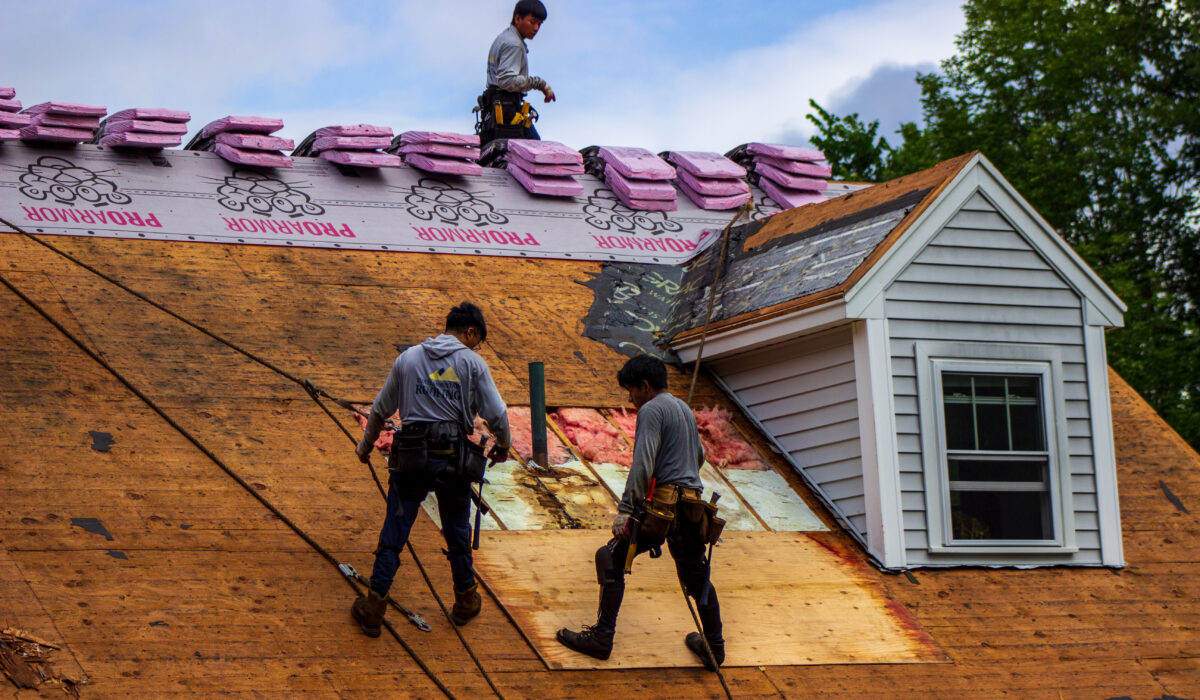If your home is in need of a roof replacement, you likely have two questions top of mind: How long will the new roof last? And what can I expect from the process? A roof replacement is a major investment in your home’s safety and longevity, and it’s natural to want clarity on what kind of return you’ll get.
In this blog, we’ll explore the expected lifespan of a roof, especially one built with asphalt shingles and a high-quality roofing underlayment. We’ll also walk through the factors that influence how long a roof lasts, what you can expect from your local roofers during the installation process, and how to make your new roof last as long as possible.
Average Lifespan of an Asphalt Shingle Roof
Asphalt shingles are the most common roofing material used in the U.S. due to their affordability, durability, and ease of installation. On average, an asphalt shingle roof can last anywhere from 20 to 30 years. However, that number can vary depending on a number of conditions.
Architectural (or dimensional) asphalt shingles tend to last longer than basic 3-tab shingles, often providing 25 to 30 years of protection. Premium or luxury asphalt shingles can last even longer, with some manufacturers offering warranties of 40 years or more.
Your roofing underlayment—the water-resistant or waterproof barrier beneath the shingles—also plays a key role. A high-quality underlayment provides an extra layer of protection against moisture infiltration and can help prolong the life of your roof.
What Impacts the Lifespan of a Roof Replacement?
While manufacturer warranties offer a general sense of how long a roof will last, actual lifespan depends on a few critical factors:
1. Installation Quality
A properly installed roof will last far longer than one with shortcuts or improper techniques. That’s why hiring a trusted local roofing contractor matters. A good contractor will ensure that the roof deck is sound, the underlayment is installed correctly, and flashing and ventilation are done right.
2. Climate and Weather
Homes in areas with harsh weather conditions—like Vermont’s heavy snow, ice, and fluctuating temperatures—may see shorter lifespans due to environmental stress. Snow loads, freeze-thaw cycles, and high winds all contribute to wear and tear on asphalt shingles.
3. Ventilation and Insulation
Proper attic ventilation helps prevent moisture buildup and reduces heat that can degrade roofing materials over time. Without adequate airflow, your roof could suffer from mold growth, rot, or premature aging.
4. Roof Slope and Drainage
Roofs with steeper slopes tend to shed water and snow more efficiently, which reduces the risk of pooling and water infiltration. Poor drainage or clogged gutters, on the other hand, can shorten your roof’s lifespan by allowing moisture to sit too long.
5. Maintenance
Regular roof inspections, gutter cleaning, and timely repairs can significantly extend your roof’s life. Even small issues like lifted shingles or missing flashing can lead to much bigger problems if ignored.
What to Expect from a Roof Replacement
When you hire a local roofing contractor for your roof replacement, you should expect a clear process, transparent communication, and expert workmanship. Here’s a general breakdown of what the project includes:
- Initial Inspection: Your contractor will examine the roof to assess damage, structural integrity, and any specific needs.
- Quote and Timeline: You’ll receive an estimate for materials and labor, as well as a proposed schedule for the project.
- Material Selection: Most Vermont homeowners choose asphalt shingles, and your contractor can walk you through different types, colors, and warranties.
- Old Roof Removal: The crew will strip away the old shingles and underlayment, exposing the roof deck.
- Deck Repairs: Any damaged decking will be repaired or replaced.
- Underlayment and Flashing: A new underlayment is laid, followed by flashing around key areas like chimneys, skylights, and valleys.
- Shingle Installation: Asphalt shingles are installed in overlapping layers to create a durable and weather-resistant barrier.
- Final Cleanup and Inspection: The job ends with a cleanup and final inspection to ensure quality and satisfaction.
Making Your Roof Last Longer
Although every roof will eventually need replacement, there are steps you can take to extend the life of your asphalt shingle roof:
- Schedule annual roof inspections, especially after harsh winters or storms.
- Keep your gutters clean to prevent water backup and ice dam formation.
- Remove debris from the roof surface to reduce moss and algae buildup.
- Trim nearby trees to prevent branches from damaging the shingles.
- Address repairs quickly instead of letting small issues turn into larger ones.
Final Thoughts: How Long Will Your Roof Replacement Last?
When installed properly and maintained well, an asphalt shingle roof replacement should last 25 to 30 years in most Vermont homes. Your roofing underlayment, climate conditions, and the skill of your local roofing contractor all influence that number.
If you’re considering a roof replacement, start by connecting with a trusted local contractor who can guide you through your options, recommend the best materials, and ensure the job is done right. Your roof is too important to leave to chance—and with the right team and approach, you can protect your home for decades to come.


